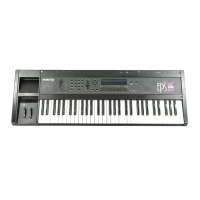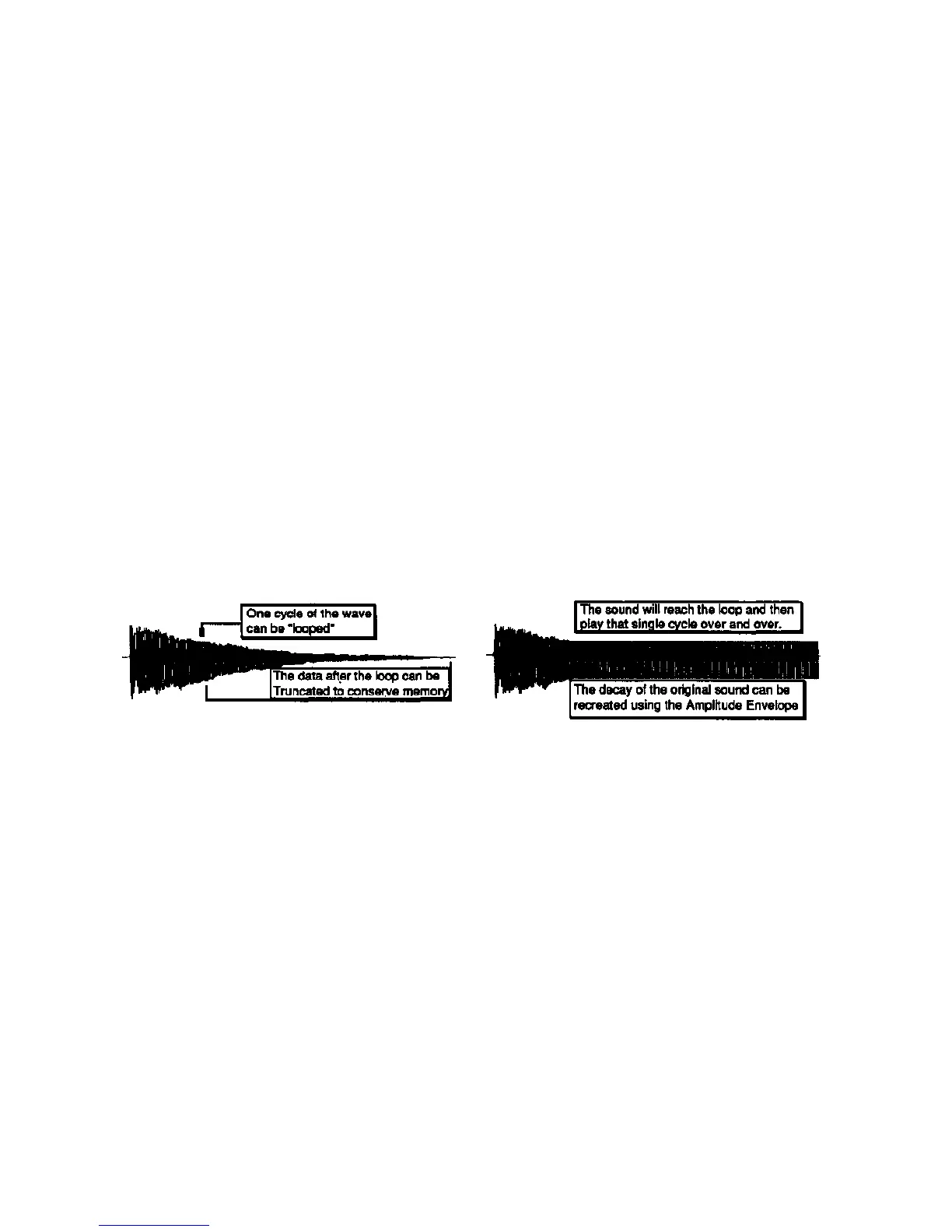Section 5 — Sampling
EPS-16 PLUS Musician's Manual
Looping
One of the fundamental challenges of sampling is to make efficient use of the
sampler's memory. You simply cannot sample the entire duration of every event.
Plus, you usually want a sound to continue playing as long as you're holding the
key down, regardless of how long the original event was. This is why we
employ Looping.
When we loop a segment of sound, what we are doing is playing through to the
end of the looped segment and then instantly starting back at the beginning of the
loop, as if playing one continuous sound. It's a lot like a tape loop—a segment
of recording tape with the two ends spliced together so that it cycles repeatedly.
Consider that a low note on a grand piano can last 30 seconds or more from the
time the key is struck to the time it decays into silence. Sampling this entire event
does not make sense because:
• You could use up all your sampling memory (and then some) on one note,
leaving no memory for multisampling; and
• After the initial attack transients die down, the sound of the piano string settles
into what is essentially a repeating waveform. This means that you can select
one cycle of this repeating waveform and loop it (play it over and over). All
the data after the loop can then be removed (truncated) because you don't need
it. This conserves memory.
A piano, solo violin, guitar, or woodwind are all sounds which you could loop in
this way. However, there are other sounds which do not settle into a repeating
waveform. A full pipe organ, string section or a choir would be good examples
of such sounds. These sounds remain extremely complex throughout their
duration. Using a single-cycle loop on a choir sample would cause the sound to
suddenly become very static and one dimensional when it reaches the looped
section. These complex, ever-changing sounds require that we employ longer
loops—repeating a large segment of the sound rather than just a single wavecycle.
Generally, successful loops fall into one of two categories—single-cycle loops,
which we refer to as short loops, and loops of about a second or more, which we
call long loops. Which type to use depends on the sound. If the sound settles
into something relatively static, use a short loop. If the sound is composed of
many elements which constantly chorus and interact with each other over time,
you will need to use a long loop.
5 - 12

